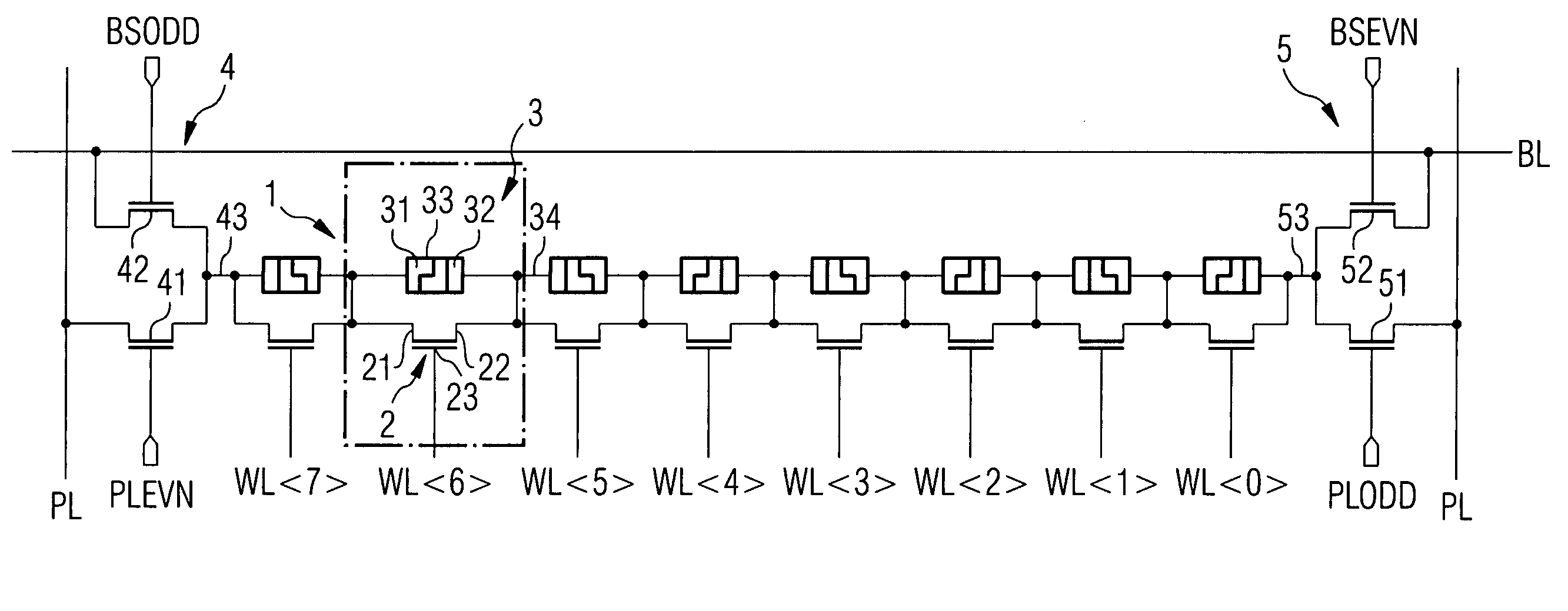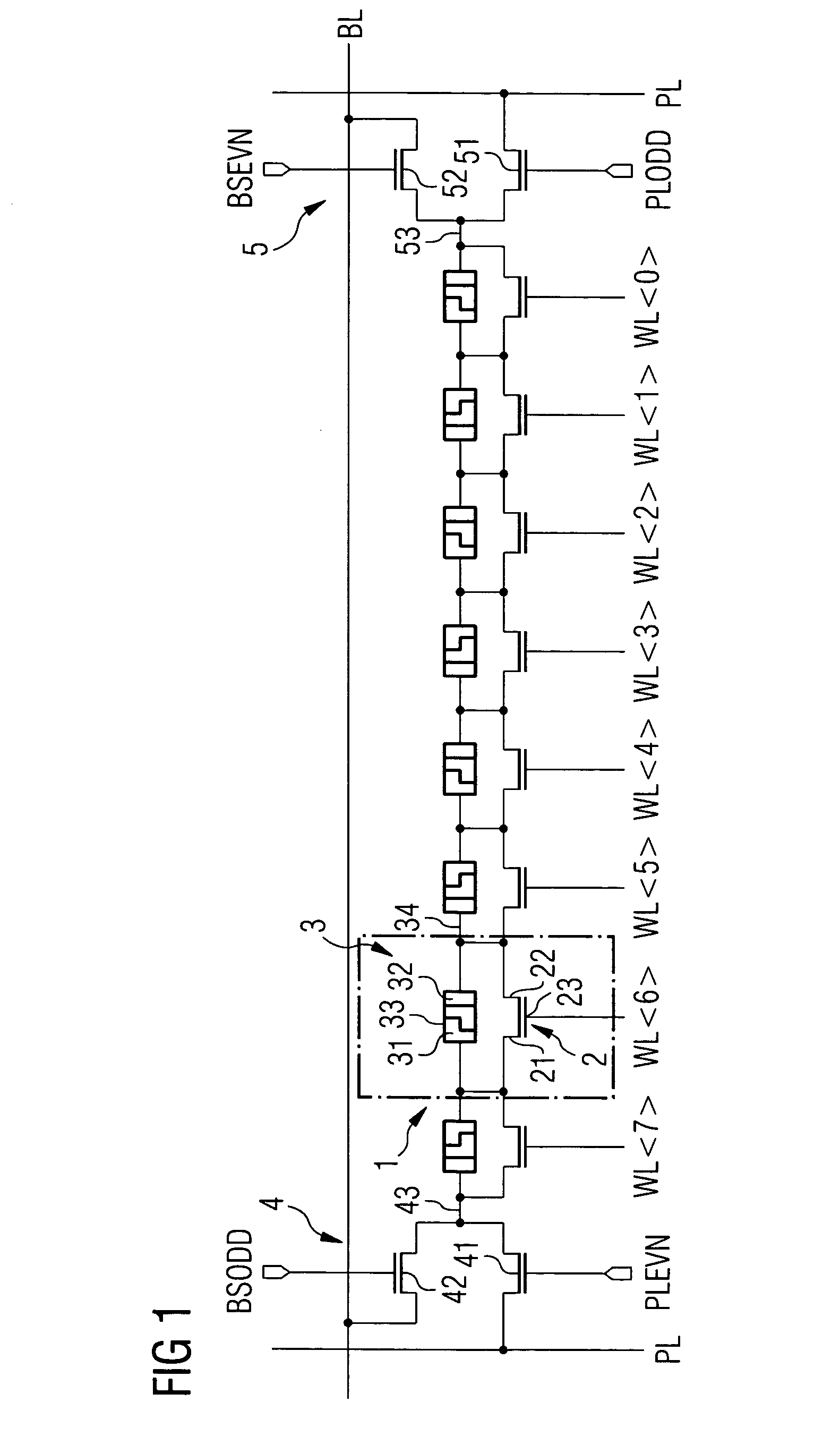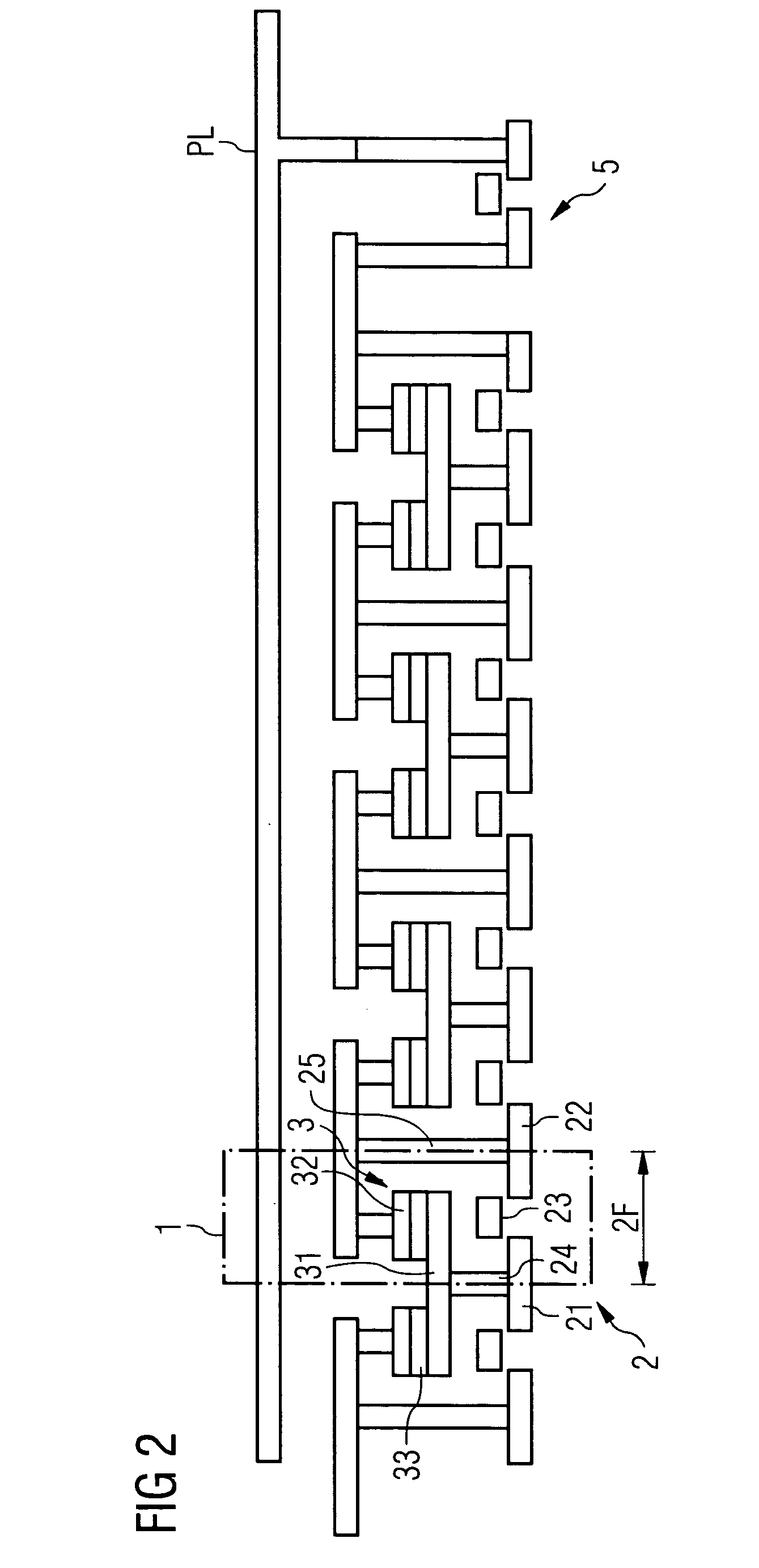Memory circuit having memory cells which have a resistance memory element
a memory cell and memory circuit technology, applied in static storage, digital storage, instruments, etc., can solve the problems of high current demand, difficult miniaturization of semiconductor memory concepts based on storage capacitors, and low knowledge of commercial products based on memory concepts having a resistance memory element. achieve the effect of effective shielding against interference and minimal area requirements
- Summary
- Abstract
- Description
- Claims
- Application Information
AI Technical Summary
Benefits of technology
Problems solved by technology
Method used
Image
Examples
Embodiment Construction
[0028]FIG. 1 schematically shows a detail from a memory circuit according to one embodiment of the invention with eight memory cells 1 connected in series between a ground line PL and a bit line BL. Each memory cell 1 has a drive transistor 2 and a resistance memory element 3, which are connected in parallel. As depicted, the resistance memory element 3 is composed of a cathode electrode 31, an anode electrode 32 and a storage layer 33 situated in between and is distinguished by a bipolar switching behavior. In other words, the polarity of the voltage applied between the electrodes of the resistance memory element 3 influences the activation operation of the resistance memory element 3.
[0029] In one embodiment, the bipolar resistance memory element 3 is a resistance memory element that is also known as a PMC (programmable metallization cell), where the anode electrode 32 is a reactive electrode and the cathode electrode 31 is an inert electrode, between which a porous, highly resis...
PUM
 Login to View More
Login to View More Abstract
Description
Claims
Application Information
 Login to View More
Login to View More - R&D
- Intellectual Property
- Life Sciences
- Materials
- Tech Scout
- Unparalleled Data Quality
- Higher Quality Content
- 60% Fewer Hallucinations
Browse by: Latest US Patents, China's latest patents, Technical Efficacy Thesaurus, Application Domain, Technology Topic, Popular Technical Reports.
© 2025 PatSnap. All rights reserved.Legal|Privacy policy|Modern Slavery Act Transparency Statement|Sitemap|About US| Contact US: help@patsnap.com



